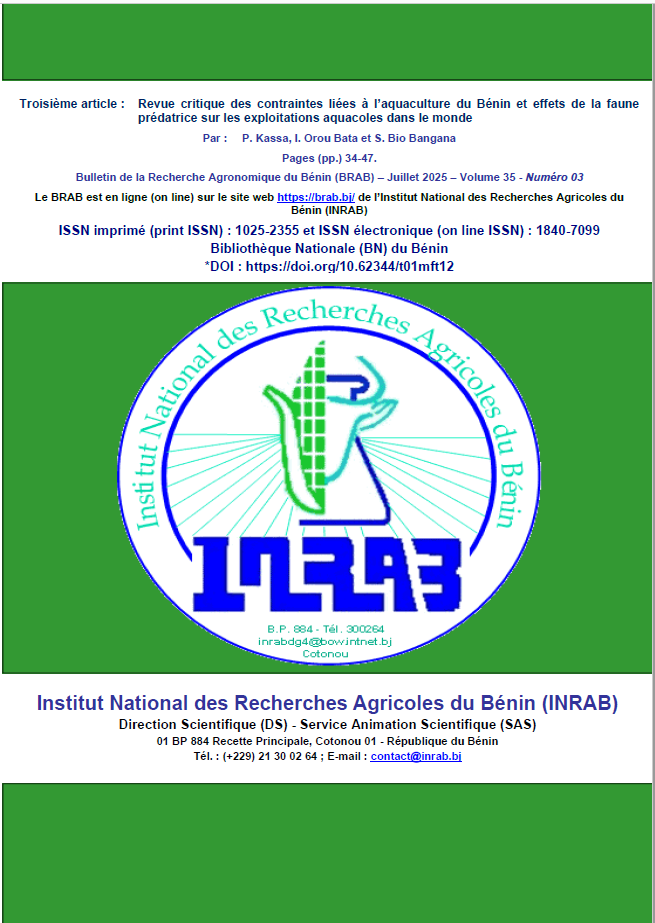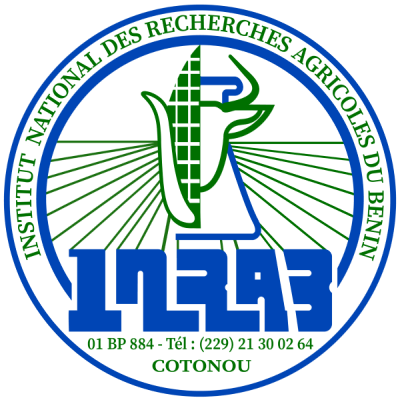Critical review of the constraints affecting the aquaculture in Bénin and the effects of predatory wildlife on aquaculture farms worldwide
DOI:
https://doi.org/10.62344/t01mft12Keywords:
Southern Benin, Inland aquaculture system, Impact of predators on fish production, Spatial analysis and sustainable management, assessment of current conditions, recommendationsAbstract
In Bénin, aquaculture faces numerous challenges that hinder its development. Among these challenges are the harmful effects of predatory wildlife on aquaculture production. This synthesis aimed to conduct a critical review of knowledge, firstly on the constraints faced by aquaculture farms of Bénin and secondly on the effects of predatory fauna in aquaculture operations worldwide, with the goal of guiding research and proposing effective solutions to counter the pressures on inland aquaculture in Benin. The collection and use of scientific documents available online were carried out using the Google Chrome browser. The main sources consulted included the Google Scholar search engine, the ResearchGate platform, as well as the academic databases AJOL (African Journals Online), Scopus, Web of Science and DOAJ (Directory of Open Access Journals) and without any inclusion criteria. The documents concerned those published in French or English containing key words linked to the topic of the study. In total 104 Scientific papers and documents have been consulted but 53 were exploited. Beninese aquaculture is threatened by water pollution, climate warming, and predation. Aquaculturists lacked training and modern technologies, while access to funding and high production costs posed economic obstacles. Predatory fauna disrupted aquaculture farms. Predators adopted various strategies depending on their environment. Predator behaviors are influenced by climatic conditions, aquatic vegetation, and landscape features. The literature on predation in aquaculture farms lacks detailed geospatial data. GIS analysis can help map risk areas and improve aquaculture management. It is possible to implement more sustainable and specific management approaches in response to the diversity of predators.

Published
Issue
Section
License
Copyright (c) 2025 Bulletin de la Recherche Agronomique du Bénin

This work is licensed under a Creative Commons Attribution-NoDerivatives 4.0 International License.
Les articles publiés par le Bulletin de la Recherche Agronomique du Bénin sont en libre accès. Ils sont gratuits pour tout le monde, immédiatement téléchargeables dès la publication et distribués sous la licence CC BY-NC-ND (https://creativecommons.org/licenses/by-nc-nd/4.0/).







